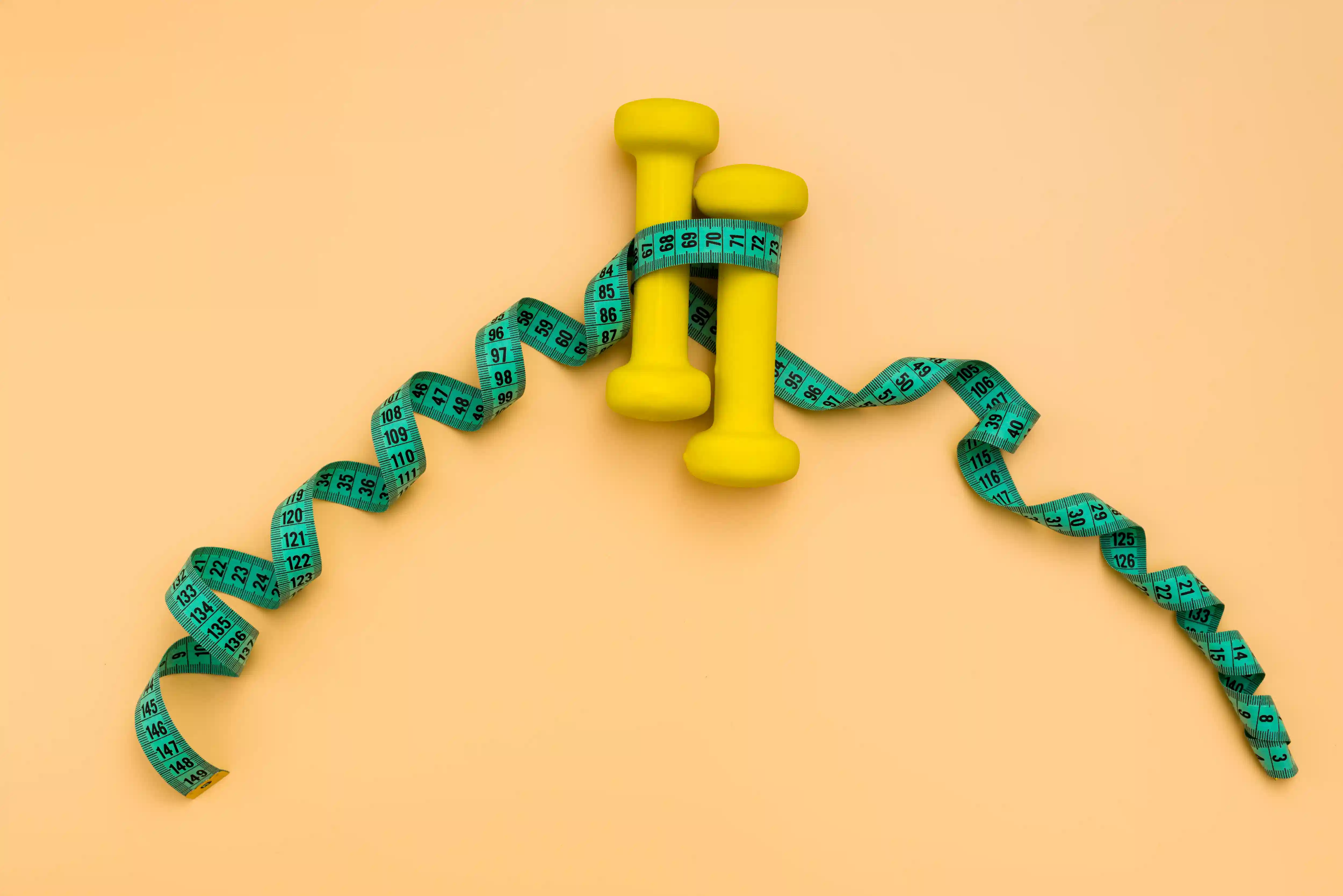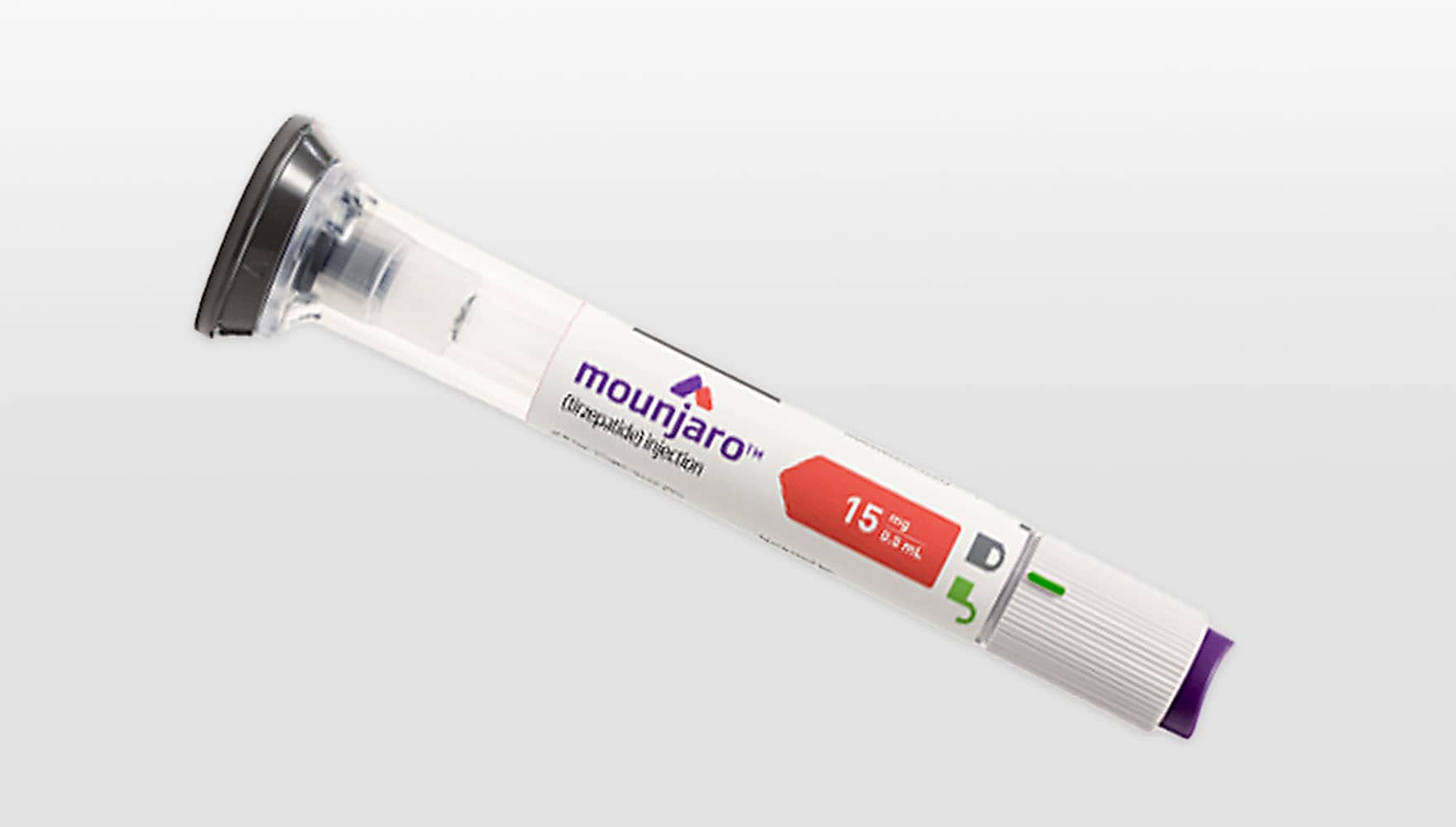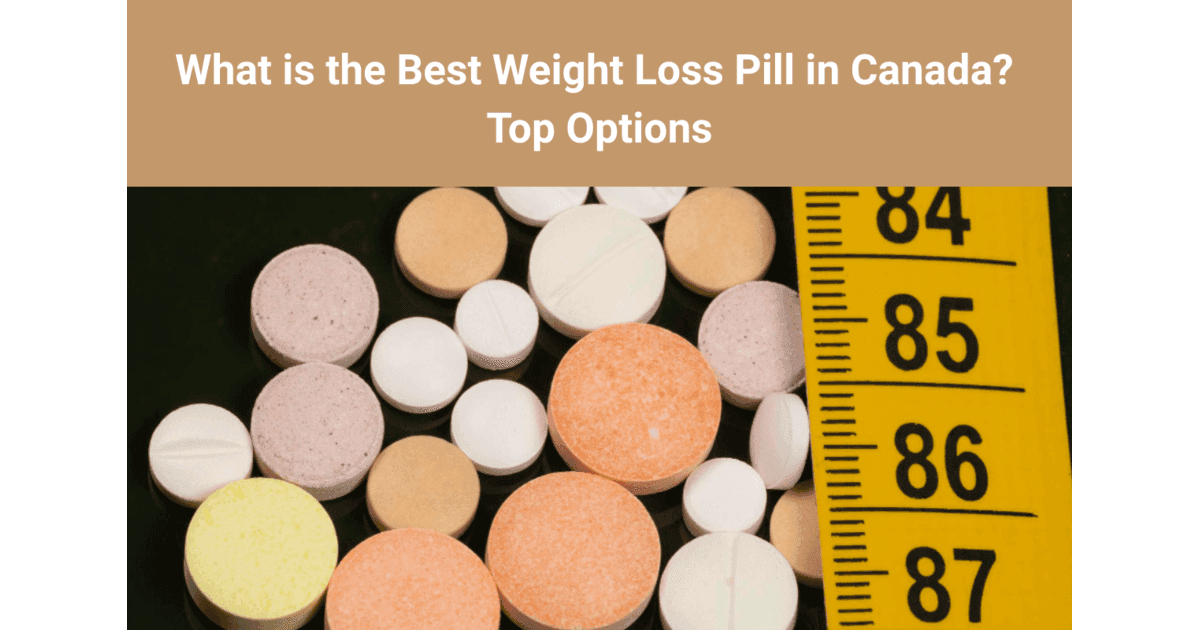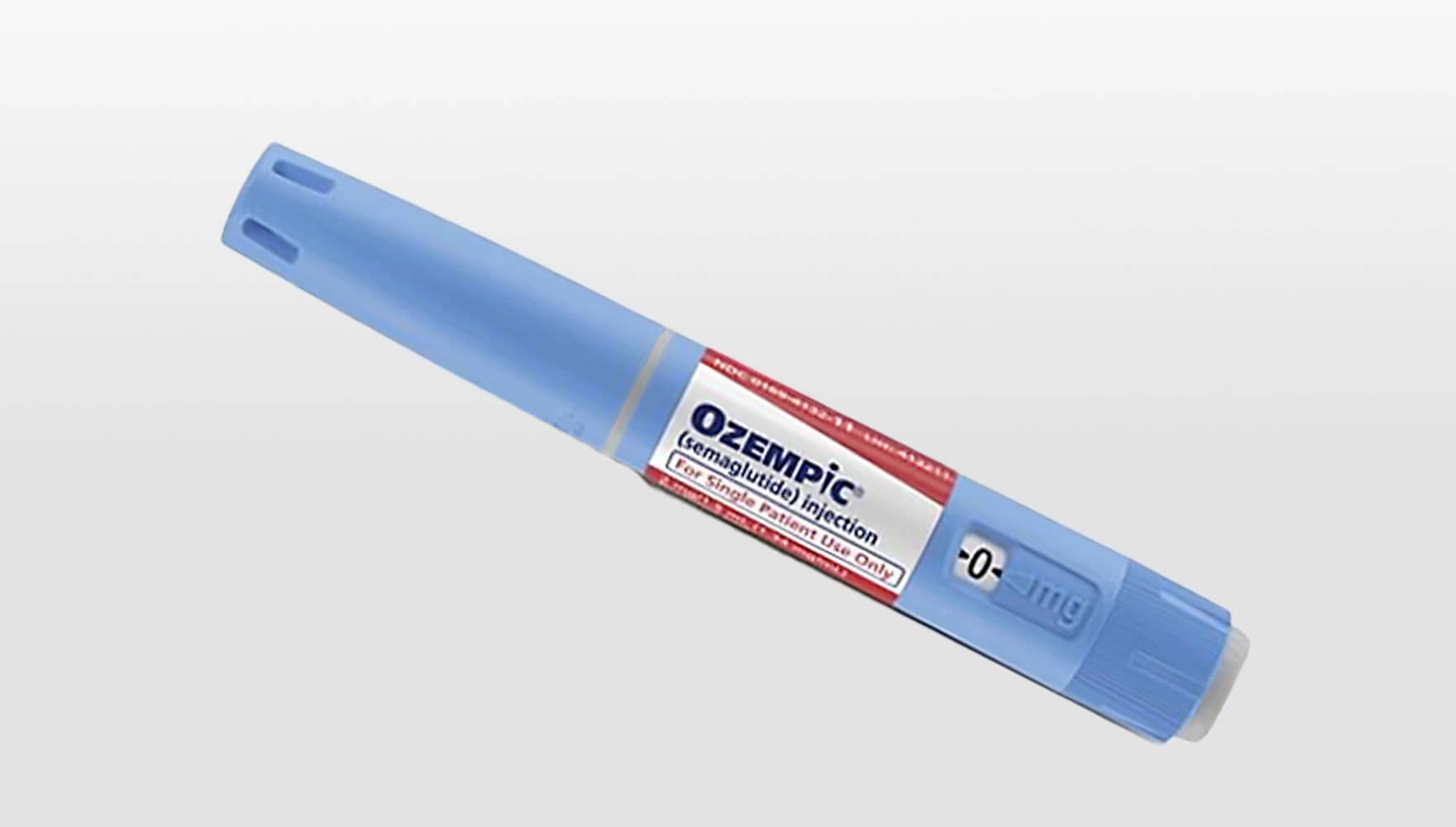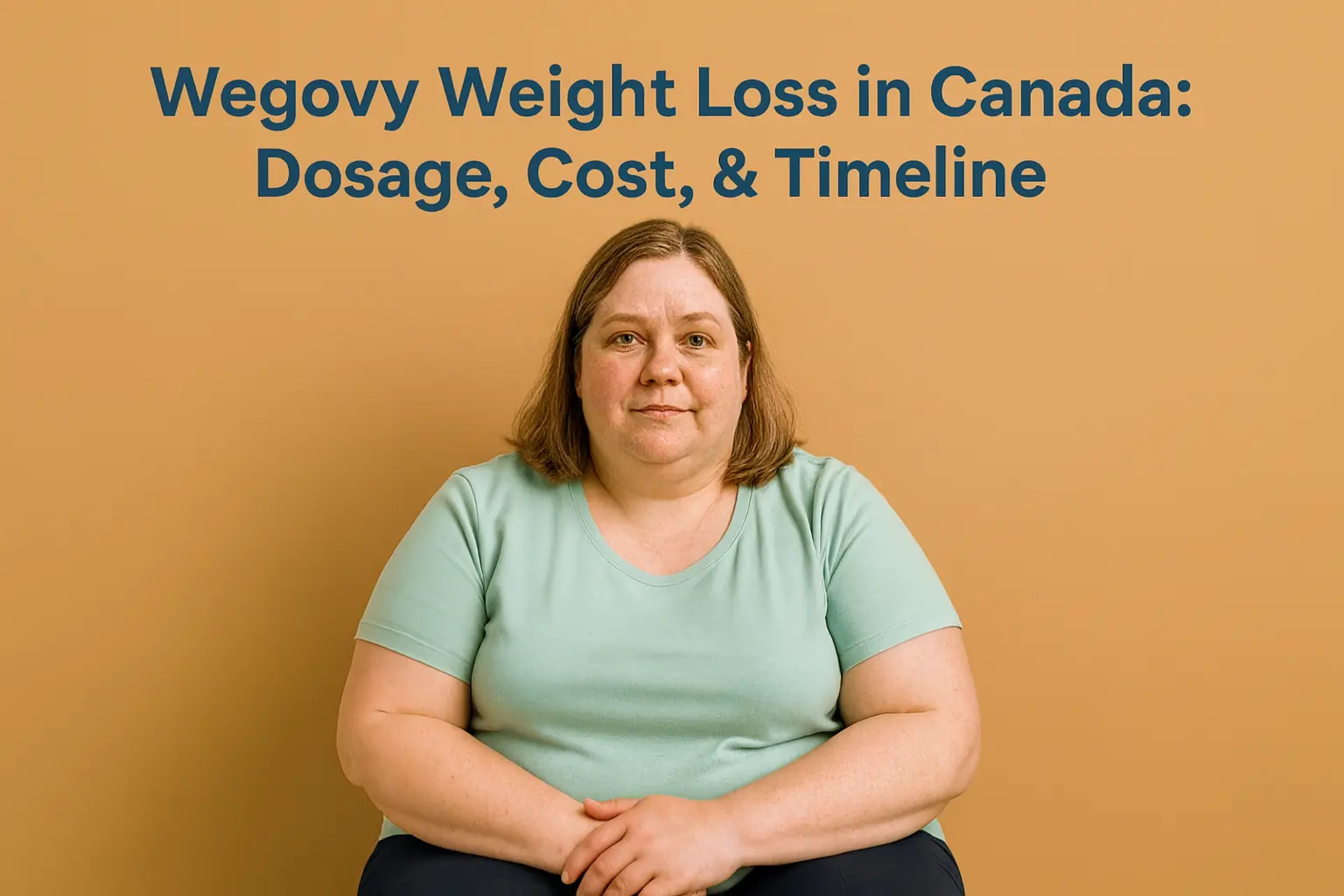If you’re using Ozempic to support your weight loss journey, you might wonder what the maximum dose of Ozempic for weight loss is or whether increasing it will accelerate results.
While higher doses may seem like a quicker path to results, it’s important to approach dosing with caution. According to the FDA, taking too much Ozempic can lead to serious side effects that may require extended medical care due to the drug’s long half-life, which means it stays in your body for approximately 1 week.
If you’re aiming for effective, sustainable results, let's walk you through how Ozempic dosing works, the maximum recommended amount for weight loss, and why medical supervision is key to staying safe and seeing sustainable results.
What Is Ozempic and How Does It Help With Weight Loss?

Ozempic, whose active ingredient is semaglutide, belongs to a drug class called GLP-1 receptor agonists. Although it’s primarily approved for managing Type 2 diabetes, many patients have experienced significant weight reduction while using it.
Clinical studies have shown that adults using Ozempic often report feeling fuller for longer and consuming fewer calories, which leads to significant weight loss over a period of 20 to 68 weeks. This response is tied to how the medication interacts with the body, helping regulate hunger, blood sugar, and digestion in ways that support sustained weight management.
Here's how Ozempic supports weight loss:
- Stimulates Insulin Secretion: Helps the body lower blood sugar levels more effectively, particularly after meals.
- Slows Down Digestion: Delays how quickly food leaves the stomach, leading to prolonged fullness.
- Reduces Appetite: Lowers hunger signals, making it easier to manage portion sizes and calorie intake.
- Decreases Glucose Production in the Liver: Supports better blood sugar control, indirectly aiding fat metabolism.
- Enhances Satiety Signals: Makes you feel full sooner and for longer, helping reduce unnecessary snacking or overeating.
Ozempic's effects on weight loss often make it a preferred substitute over similar medications. By simultaneously managing blood sugar levels and promoting a lower calorie intake, this drug opens new avenues for sustainable weight management.
What are the Available Ozempic Dosages in Canada?
In Canada, Ozempic is available in several pen formats, each colour-coded by dosage strength. While Ozempic is approved for managing Type 2 diabetes, healthcare providers may prescribe it off-label to support weight loss.
To better understand how dosing works for weight management, it's important to first look at the available strengths and forms of Ozempic pens.
| Red Label Pens | Blue Label Pens | Yellow Label Pens |
|---|---|---|
| 0.25 mg or 0.5 mg per dose | 1 mg per dose | 2 mg per dose |
| Typically used for starting treatment or during dose escalation. | Common maintenance dose for blood sugar control. | Maximum approved Ozempic dose in Canada. |
| Not intended as a long-term dose for weight loss. | It may be used for weight loss in some patients under medical supervision. | Sometimes prescribed for enhanced weight loss outcomes, if the patient responds well. |
What is the Recommended Dosage Schedule for Ozempic Weight Loss?
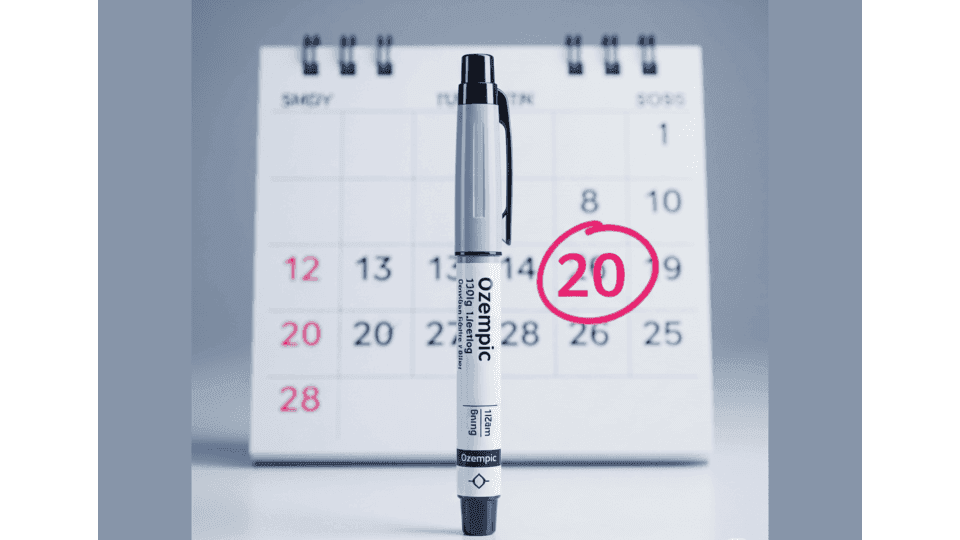
When using Ozempic for weight loss, following a structured dosing plan helps minimize side effects and improve long-term success. Below is the typical schedule most healthcare providers follow in Canada:
- Weeks 1–4: 0.25 mg once weekly. This is the initial starting dose. It allows your body to adjust to semaglutide and is not intended for active weight loss.
- Weeks 5–8: 0.5 mg once weekly. Often used as the first effective dose for appetite control and gradual weight reduction.
- Month 3 onwards: 1 mg once weekly. Prescribed when further support is needed for weight loss or blood sugar control. Requires regular medical monitoring.
- Advanced stage: Up to 2 mg once weekly. Used in certain cases for greater weight loss impact. It must be guided by a healthcare professional due to the increased risk of side effects.
As your body adapts to each dose, some individuals may eventually reach the highest allowable amount. But how much is too much, and what’s considered safe?
What is the Maximum Dose of Ozempic for Weight Loss?
The highest dose of Ozempic for weight loss is 2 mg, injected weekly. This Ozempic weight loss weekly dose is reserved for patients whose lower doses fail to produce desired results. It’s crucial to note that this level is not suitable for everyone; your healthcare provider will review your medical history to determine if you qualify.
Patients should never self-administer higher doses to accelerate weight loss. Such actions heighten the risk of side effects and complications. Always discuss dose adjustments with your doctor for optimal safety and effectiveness.
Who Should Avoid the Max Dose of Ozempic for Weight Loss?
While Ozempic’s maximum dose is effective for some, others need to avoid it due to pre-existing conditions or medical risks. For instance:
- Kidney Disease: Patients with kidney impairment or previous acute kidney injury may face severe complications.
- Heart Disease: Individuals with cardiovascular issues require careful dosing to prevent undue strain.
- Medullary Thyroid Carcinoma: This cancer type makes semaglutide unsuitable for safe use.
- Endocrine Neoplasia Syndromes: Such syndromes can exacerbate reactions to Ozempic.
- Severe Side Effects: Patients who experience debilitating symptoms like chronic nausea or vomiting on lower doses should avoid scaling up.
Consult your healthcare provider to ensure appropriate dosing tailored to your unique health profile for safe and effective treatment.
Titration: How to Safely Increase Ozempic Dose

Titration is the process of gradually increasing your Ozempic dose over time to help your body adjust and reduce the risk of side effects. This process is carefully managed by your healthcare provider based on how your body responds to the weight loss medication.
Your dosage will only increase if your provider believes it’s medically necessary, whether to improve weight loss results or enhance blood sugar control.
During titration, maintaining close communication with your healthcare provider is crucial. They can address unexpected reactions, like nausea, abdominal pain, or hypoglycemia, and adjust dosages accordingly.
This step-by-step process helps find the best balance between effectiveness and comfort.
Ready to begin your weight loss journey with expert-guided care?
What Happens If You Miss a Dose or Take Too Much Ozempic?
As discussed earlier, Ozempic has a long half-life of approximately seven days, which means it stays in your system for an extended period. Because of this, it’s important to be very careful with your dosing.
In the event of high dose Ozempic for weight loss, contact your healthcare provider immediately. Supportive treatment may be required based on your symptoms, and close medical monitoring could be necessary due to the medication’s prolonged activity in the body.
If you miss a dose, take it as soon as possible within five days of the missed injection. If more than five days have passed, skip the missed dose and take your next injection on your regularly scheduled day.
However, it's best to follow your healthcare provider’s guidance when adjusting your ozempic dose for weight loss.
The Hidden Risks of Increasing Your Ozempic Dose
Higher Ozempic dosages may bring serious side effects that require close monitoring. Patients should be vigilant about the following complications:
- Acute kidney injury: Kidney function may worsen, leading to long-term issues.
- Allergic reactions: Symptoms include rash, itching, Ozempic face, or swelling, requiring immediate medical attention.
- Stomach pain: Persistent discomfort can signal more severe gastrointestinal problems.
- Hair loss: Some patients have reported thinning or shedding after increased doses.
These side effects highlight the importance of regular doctor check-ins. Understanding your tolerance and promptly addressing adverse symptoms safeguards health during treatment.
Your Weekly Ozempic Routine: 8 Tips to Stay on Track
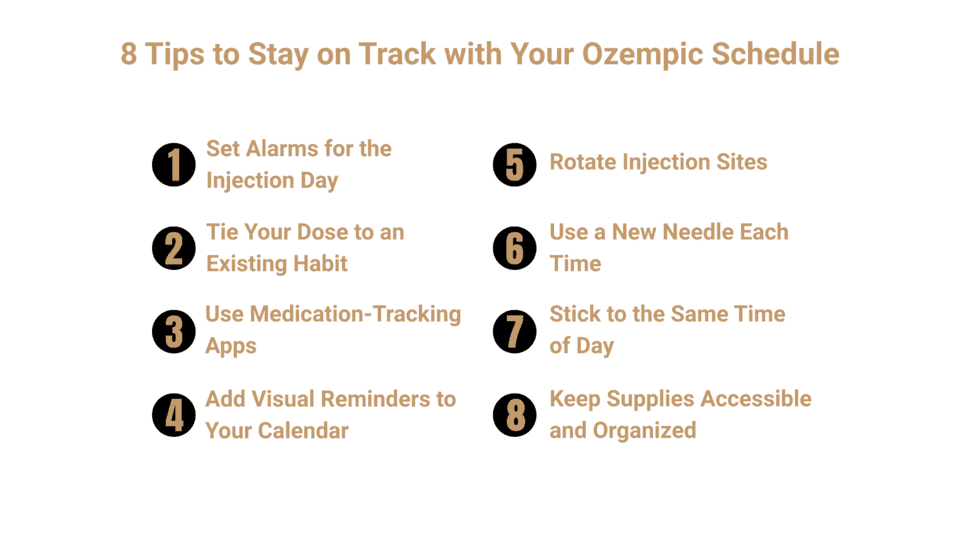
Staying consistent with your Ozempic schedule is key to seeing long-term weight loss results. Missing doses or injecting irregularly can impact how well the medication works. Here are 8 practical tips to help you build a steady Ozempic habit:
1. Set Alarms for the Injection Day: Use phone reminders or smart watches to alert you on your scheduled day; consistency is easier when it’s automated.
2. Tie Your Dose to an Existing Habit: Link your injection to a routine event, like Sunday breakfast or evening skincare. Habit-stacking helps build reliability.
3. Use Medication-Tracking Apps: Some apps offer reminders, dose tracking, and alerts if a dose is missed; use them for accountability.
4. Add Visual Reminders to Your Calendar: Mark your injection days on a physical calendar or whiteboard to keep them top-of-mind in your daily space.
5. Rotate Injection Sites: Alternate between your abdomen, thigh, or upper arm to prevent skin irritation and ensure better absorption over time.
6. Use a New Needle Each Time: Changing the needle with every injection supports proper hygiene and ensures smoother, more comfortable dosing.
7. Stick to the Same Time of Day: Whether it’s mornings or evenings, consistency in timing helps regulate your body's rhythm and makes it easier to remember.
8. Keep Supplies Accessible and Organized: Store your pen, alcohol swabs, and new needles in one visible, dedicated spot to make weekly prep effortless.
Skip the Clinic. Start Your Doctor-Led Plan Online With DooÜ
Tired of long wait times, rushed appointments, or unclear next steps? At DooÜ, we’re changing how Canadians approach weight loss by bringing expert care directly to you.
Whether you're navigating weight-related health issues or just looking for a medically supervised way to use Ozempic, DooÜ offers a fully virtual, doctor-led program designed around your needs. No guesswork, no hidden fees, just safe, science-backed treatment plans with unlimited messaging access to real Canadian healthcare providers.
It’s your journey, let’s make it simple, affordable, and effective.
Final Thoughts: Follow the Safe Path to Sustainable Weight Loss
Achieving sustainable weight loss requires discipline and a safe, medically-guided approach. Ozempic facilitates this by improving glycemic control and reducing heart attack risks, but it must be used responsibly. Adhering to your healthcare provider's instructions and monitoring symptoms ensures long-term success.
Prioritize a balanced lifestyle, combining medication with a healthy diet and exercise. By making mindful decisions, you can secure sustainable weight loss while minimizing cardiovascular risks and other side effects.
Frequently Asked Questions
Can I use Ozempic solely for weight loss if I do not have diabetes?
Yes, Ozempic is often prescribed off-label for weight management in non-diabetic patients. However, ensure a healthcare professional oversees its use to evaluate proper dosage and monitor blood sugar levels effectively.
How long does it take to see weight loss results with Ozempic?
Weight loss timelines vary. Some patients notice changes within the first few months of following the Ozempic dosing schedule. Results depend on body weight, mg dose, and adherence to diet and exercise routines.
Can I increase my dose on my own?
No, dose titration should be conducted by a healthcare professional to avoid severe side effects. Self-adjusting doses, especially to higher levels, can increase risks like nausea and hypoglycemia. Consult your doctor for dosage changes.
Is the maximum dose different for people with other health conditions?
For individuals with kidney disease, heart disease, or other medical conditions, healthcare providers may modify the dosing approach. Evaluations are based on chronic kidney disease risks and tolerance levels, ensuring safe use of the medication.
What should I do if I experience side effects at higher doses?
Contact your healthcare provider immediately if severe symptoms occur. Lower doses may be recommended to minimize side effects. For severe reactions like hypoglycemia or allergic responses, seek prompt medical attention to ensure safety.
Drag What is the Optimal Maintenance Dose of Ozempic After Weight Loss?
The ideal maintenance dose post-weight loss balances continued results with minimized exposure to side effects. For many, 0.5 mg weekly suffices, while patients who require stronger glycemic control may maintain a 1 mg or, in rare cases, 2 mg dose.









